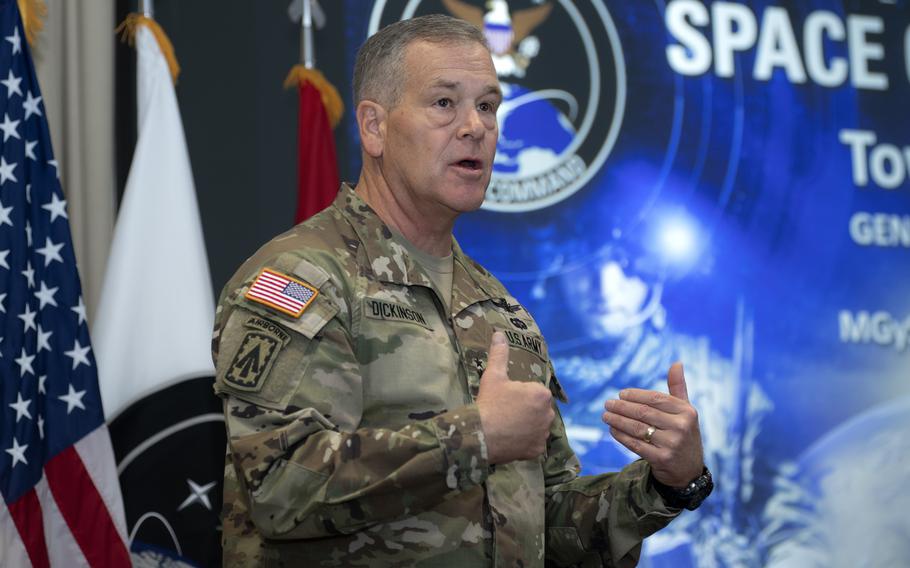COLORADO SPRINGS, Colo. (Tribune News Service) — Space Command is growing up more than three years into its reestablishment in Colorado Springs — supporting lunar missions and providing 11,000 missile warnings since the beginning of the war in Ukraine.
Space Command Gen. James Dickinson described the progress at Space Symposium in Colorado Springs on Tuesday saying he expected to declare full operational capability later this year. The importance of the milestone has been a major talking point around whether Space Command should move to Alabama or remain in town. Experts and Colorado advocates argued a move could slow down progress toward full operational capability.
However, when asked about a decision on a permanent home for Space Command, Dickinson didn’t offer any details on when an announcement could be expected.
“We are looking forward to a final basing decision,” he said.
Space Command headquarters in Colorado Springs employs 1,200 people from all services, and it is charged with defending an area from 100 kilometers above the Earth to the edges of the universe, Dickinson said.
“Every piece of our military operation is somehow grounded in space whether that’s maritime operations, air operations, land operations, cyber operations,” he said.
It’s a place that is getting much busier with the number of objects space command is tracking growing from 25,000 to 48,000 over the life of the command, he said. It is work that will benefit from artificial intelligence to help manage the huge datasets, he said.
The command is also working with the Department of Commerce on a traffic management service to help manage it.
Dickinson’s responsibility also covers the space above the contentious Ukraine and Russian border.
Since the beginning of the war in Ukraine, Space Command has provided 11,000 communications and warnings about launches to NATO partners and allies, Dickinson said.
In addition, the command has helped improve communications across Europe, he said.
“The volume, the magnitude of how many (missile warnings) we have provided, that’s very relevant,” he said. It’s a workload that would fall, in part, on those providing missile detection at Buckley Space Force Base in Aurora.
However, the same warnings would be provided in areas of the world, such as the Middle East, he said.
On the space exploration side, the command has also been closely involved in NASA’s Artemis program that will send astronauts around the moon in 2024 as part of a larger mission to send humans to Mars.
During the uncrewed Artemis I mission around the moon, Space Operations Command, based in Colorado Springs, was keeping watch on other objects in space, and testing tactics and procedures for crewed missions, according to a news release.
In addition Air Forces Space Detachment 3 oversaw the training to retrieve the space capsule and will provide support to human missions. Air Forces Space was formerly called First Air Force. It was named a component of Space Command in May.
“They have already executed a couple of great missions,” he said.
Dickinson said the command plans to support as many Artemis missions as NASA sends.
(c)2023 The Gazette (Colorado Springs, Colo.)
Visit at www.gazette.com
Distributed by Tribune Content Agency, LLC.

U.S. Army Gen. James Dickinson, U.S. Space Command commander, during a town hall at Schriever Space Force Base, Colo., Jan. 17, 2023. Dickinson is on hand this week at Space Symposium 2023 in Colorado Springs. (Tiana Williams/U.S. Pace Force)